"The most dangerous place in Kashmir"
The day our plans to go trekking were foiled by militants
While researching places to explore in the Kashmir mountains, I’d noticed the term “offbeat” has been endearingly co-opted to mean places that are “off the beaten track”.
It’s used to describe less trodden paths or more obscure valleys, and when we showed up at a camping gear hire shop in Srinagar, the guy who rented us a couple of packs enthusiastically told me the spot I’d found for us to go trekking was “an offbeat place”.
Great, I thought. After our experience at Sonamarg - a tourist-clogged hellscape that Cael writes about here - and our failed-due-to-illness trek to Tarsar Marsar, I’d tasked myself with finding us somewhere exciting and beautiful to get our fix of the mountains that had lured us to Kashmir.
Cael had come down with the same illness I’d had - mercifully he’d timed it two days later - which caused him to power chunder off the edge of the houseboat just as we planned to leave. He then managed a waxen-faced Shikara ride back to shore, where we hauled our bikes onto the street before he was chundering again in the gutter.
I checked us into a hotel for Cael to recover, and set about planning a trekking excursion for our final days in Kashmir. The “offbeat” place I found was an alpine lake called Kounsarnag. It’s a little south of the more well-known tourist spots Yousmarg and Gulmarg, and involved cycling to the small settlement Aharbal, roughly 70km from Srinagar, leaving our bicycles at a guesthouse then trekking up the valley about 17km to camp by the lake.
I was satisfied it was intrepid enough to avoid the crowds of domestic tourists that the height of summer brings.
We picked up a couple of old packs from the camping shop, which despite their tattiness were miles better than the oversized kids’ backpacks we shlepped up to Sanamus the week prior, and strapped them on the back of our bikes.
Farhan, the owner of Hook Hike Kashmir, recognised us from our radio appearance the day before, when we’d been interviewed by RJ Vijdan, a famous radio host and friend of a Kashmiri colleague of Cael’s from back in Auckland.
Vijdan had recorded us attempting to speak a few Kashmiri phrases and posted the videos to his 95 thousand followers on Instagram. We’d already been recognised by several people in the street, and the camping shop owner was keen to film some of his own content of us praising his customer service.
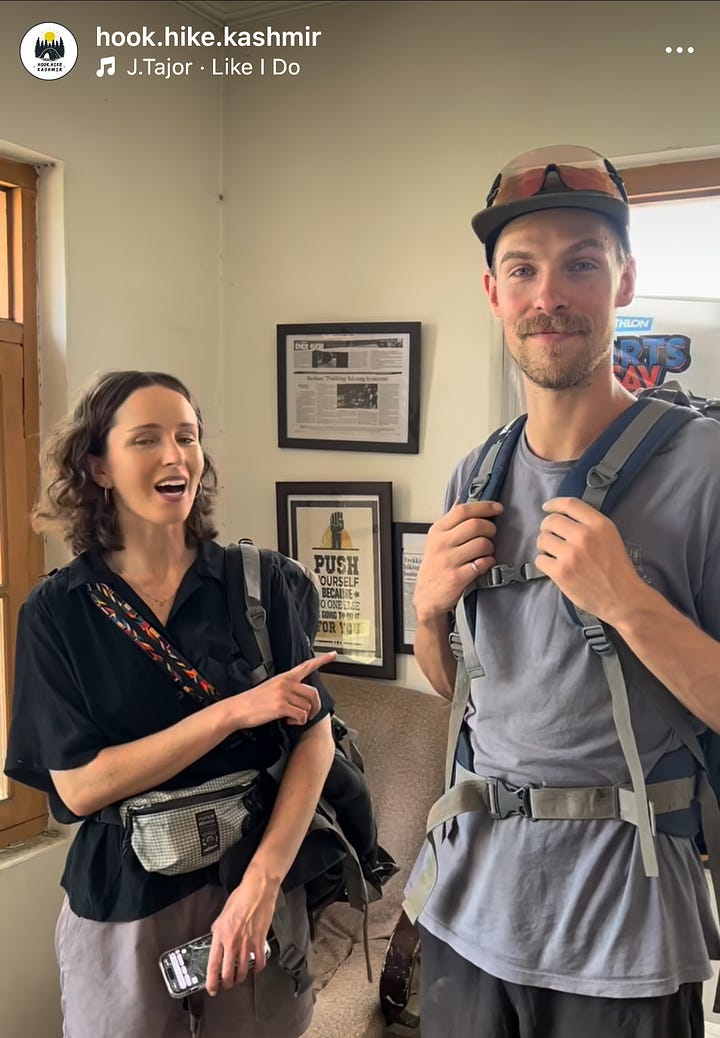
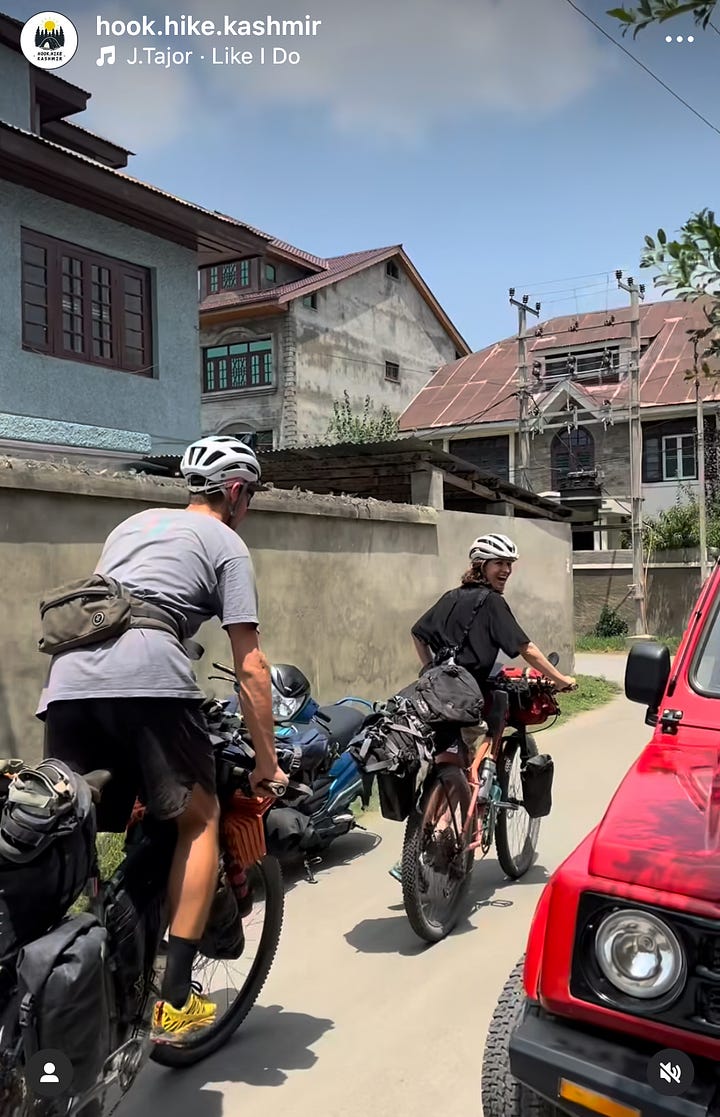
Once we’d satisfied his marketing needs we were on the road, weaving through a maze of dusty streets until the city thinned into bigger gardens and rows of apple trees.
It was blisteringly hot and dry, and we stopped to buy a watermelon from a roadside vendor that we hacked into and gobbled back thirstily.
The kilometres began to pass more slowly as we flagged in the punishing heat, stopping again to buy and drink a coke in front of an audience of about nine guys in a small village.
We finally reach the town of Shopian, which calls itself “Apple Town” and welcomes visitors accordingly with a bridge lined with shiny, red apples. With the benefit of hindsight, this might’ve been an effort at a rebrand, to paper over an unsavoury past.
We arrive in town and I don’t think I’ve ever felt more conspicuous. It’s quite clearly a place that does not remotely cater for tourists and proving this point is the difficulty we have to find a hotel. We roll up to one I’ve found on Google called the Tulip Residency and I immediately tell Cael the vibes feel a bit sketchy. We leave again to investigate another “hotel” down the road, which it turns out is not a hotel. I finally get hold of the Tulip Residency owner on the phone who doesn’t speak much English but says something about “security”.
We return to the Tulip and eventually I find a guy to show me one of the rooms. The bathroom is at the limit of what I can tolerate, but I figure for 1200 rupees we can manage for one night.
That’s when a whole bevy of men turn up and invite us to sit down inside with a glass of water and wait until someone else shows up from another hotel, which they all insist we need to stay at instead.
Eventually a man appears who seems to be the manager of the other hotel, and everyone says we need to go there for “security reasons”. We’re skeptical of what seems to be a manoeuvre to get us into the more expensive hotel since we’re foreign tourists. The manager proudly shows us photos of the fancier hotel on his phone and we finally agree on a price.
We follow him to the new hotel, which feels incongruous with its surroundings and has eccentric decor. We’re invited in by a gaggle of men who must have some stake in the place given their excitement to show us its amenities. One gives us some freshly picked plums. We concede that this is a pretty nice spot to end up, and eat a tasty, authentic Kashmiri meal of tabak maaz, wazwan and dhaniwal korma.
The following morning we set off through Shopian, stopping briefly in the bustling centre to buy fresh fruit, again feeling like a spectacle to dozens of curious locals.
Cael hasn’t shaken the illness and he’s struggling on the incline which has increased as we near the foothills of the mountains. We stop in a village, hot and irritable and vexed by the large group of staring spectators that immediately gathers.
Struggling for the energy to pedal, Cael pushes his bike for a stretch. We’ve just climbed back into the saddle as the road flattens and winds around a peaceful valley scattered with pine trees, when a car full of young guys slows and they yell at us to stop, stop, STOP!
We ignore them at first, as we’ve had similarly urgent demands from men who want selfies. However, the car screeches to a stop and one guy starts jogging back up the road towards us. Getting the sense I should see what he wants, I wait.
He reaches us, panting, and again urges us to stop, stop, and amid the broken English mixed with Kashmiri I hear again the words we heard last night, “security, security is coming, stop.”

He points over my shoulder and I turn to see an armoured vehicle hurtling up the road towards us. Within minutes, two of these vehicles have arrived and black-clad armed men pour out, scattering to surround us and scanning the surrounding area, their AK47s poised in a way that indicates immediate danger.
Striding towards me in khaki collared shirt and pants with a shiny brown belt is a senior looking officer with his name “Imtiyaz” embroidered on his chest. Imtiyaz looks very stressed. He agitatedly tells me this area is “ very dangerous” and we cannot be here. Struggling to reconcile the picturesque surroundings with this information I ask for more detail and he elaborates.
In May, militants attacked two German tourists and their Indian driver while they were sitting down for dinner in a restaurant about 5km from where we are. The driver, from Delhi, sustained critical injuries but his foreign clients managed to avoid gunfire, cowering under tables.
“We very much have apprehensions of another attack,” Imtiyaz tells me.
“You are at risk. I am arranging a vehicle.”
Another man, seemingly a civilian, chips in that “our priority is your safety, your security”.
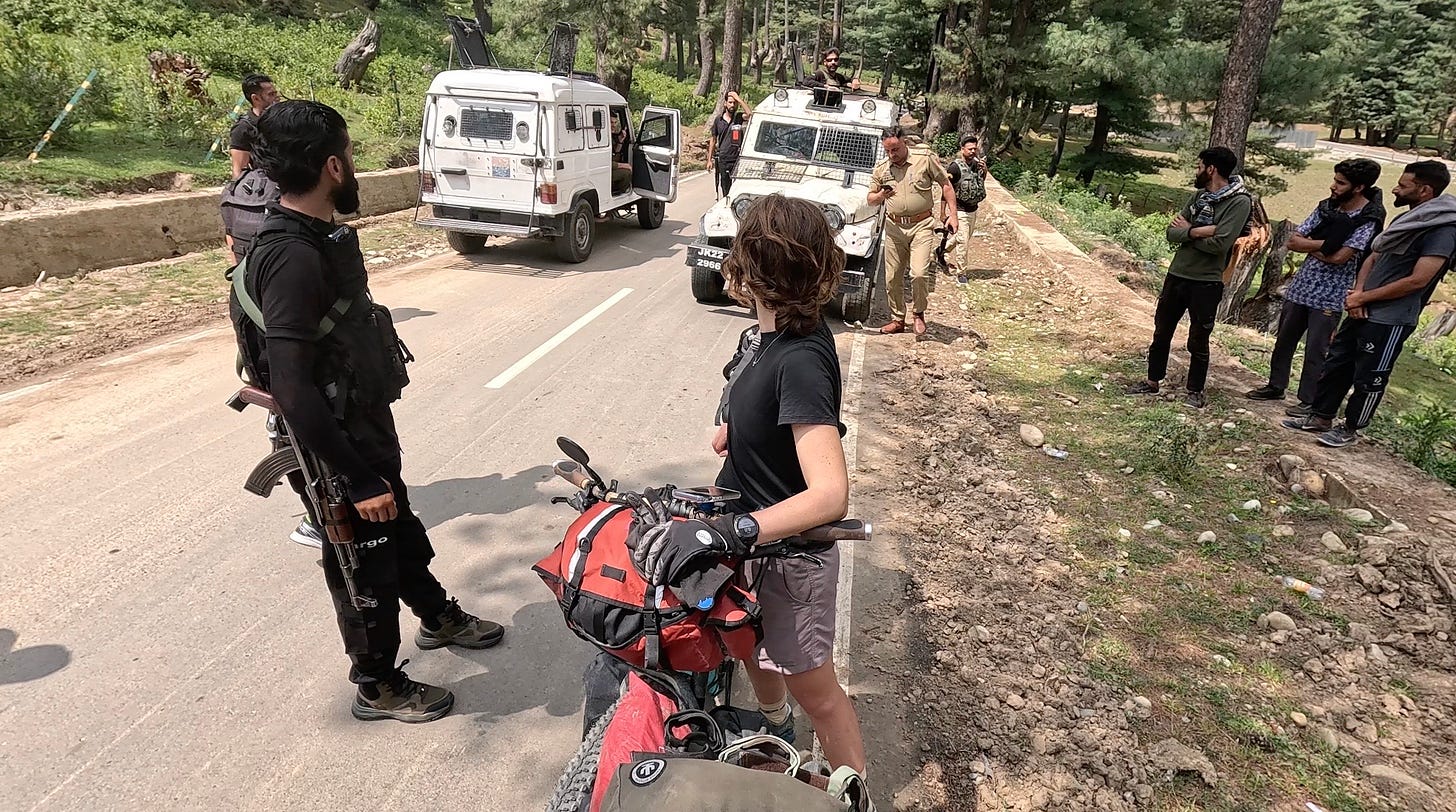
Imtiyaz tells us this area has been peaceful for some years up until the attacks - militants also shot and killed a local man in recent months. Now he says, it’s “the most dangerous place in Kashmir”.
As we recognise severity of the situation, I apologise for our ignorance. Imtiyaz’s expression softens. “When I hear there are two Western cyclists here, I go very white,” he says with a grin. “My station is 18km away”.
He then shows us the CCTV footage from the attack on the Germans and as we watch the grainy image, we see the first, then second militant approach the door to the restaurant. Imtiyaz points to the corner of the screen and after a few seconds, the barrel of an AK47 appears and the gunman lets off round after round. It’s chilling to imagine these tourists eating dinner at a hotel restaurant as we were last night, the terror they must have felt.
Imityaz then imparts the most alarming piece of information. Last night he received intel from a contact that five militants had crossed into this area, around 8pm. Around the time we were moving to the other hotel for, as it turns out, quite legitimate “security reasons”.
I ask Imityaz what motivates these militants, and he tells me they’re Pakistan-sponsored terrorists. I’m skeptical of what is a party line from the Indian government. However, it is generally accepted there are groups of militants whose aim is to keep this region as volatile as possible.
Most of the armed men leave, and the remaining few help lift our bikes onto the driver’s roof when he arrives. Then we’re given an armed escort back towards town. On the way, Imityaz hops out to attend what we infer is some sort of visit by politicians to hear local residents’ concerns.
Two of his men stay with us in the van, and one, called Sagar, asks for Cael’s Instagram, then shows us his, which features the hashtag #AK47lover and a number of highly saturated posts of him strutting around in uniform in various locations.
Cael’s reading Curfewed Nights, an account by a Kashmiri journalist of the violence through the 1990s and 2000s. In it, the author writes that Kashmir is considered the most dangerous place in the world, and Shopian the most dangerous place in Kashmir.
Riding back to Srinagar, our efforts at trekking once again thwarted, I am peeved that the militants’ agenda of senseless violence means this quiet area of apple orchards and misty mountains is ruined - both for us and for the locals who benefit from tourism.
It’s a disappointing end to our attempts to explore the mountains here, but a sharp reminder of the tension that continues to plague people’s lives.




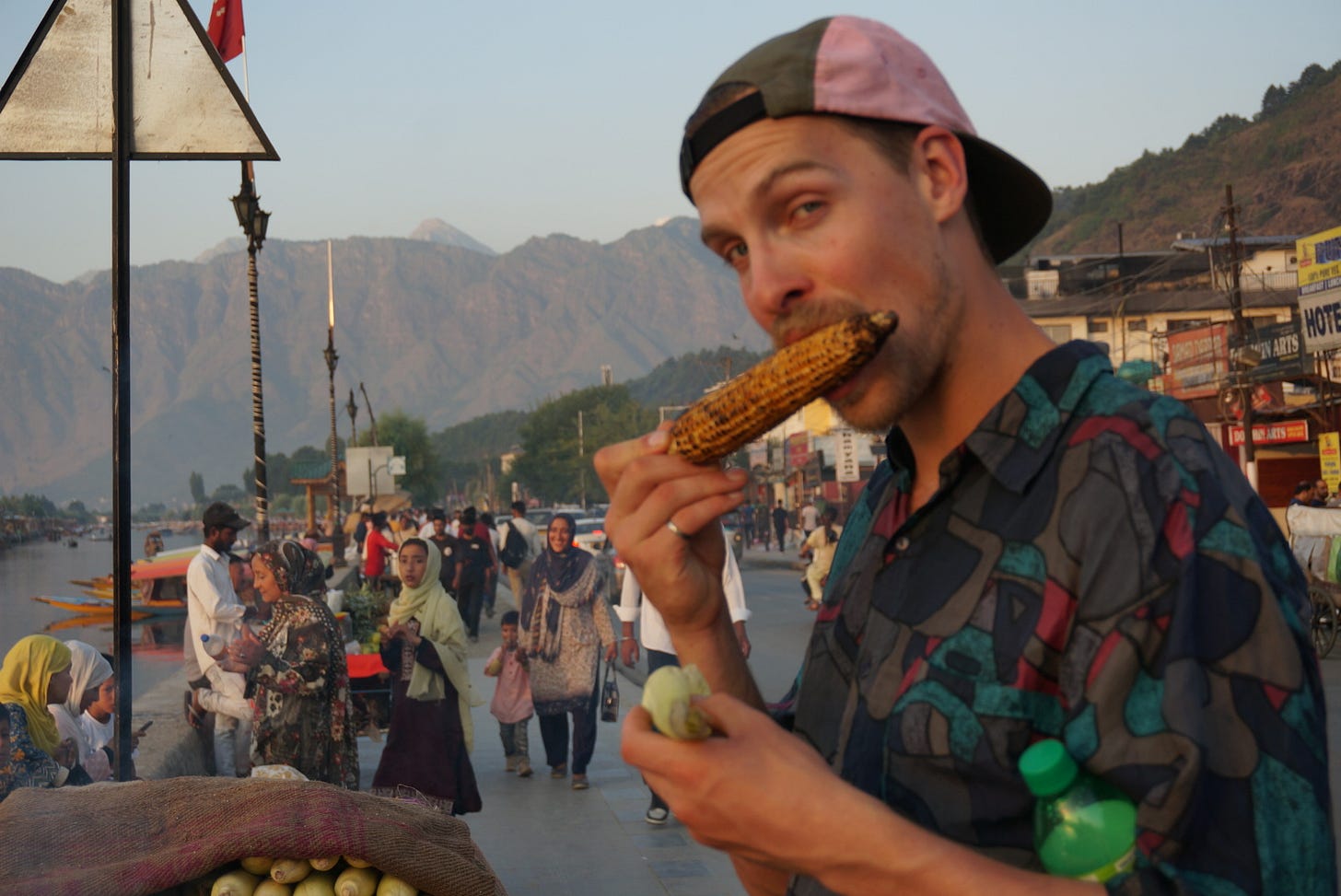
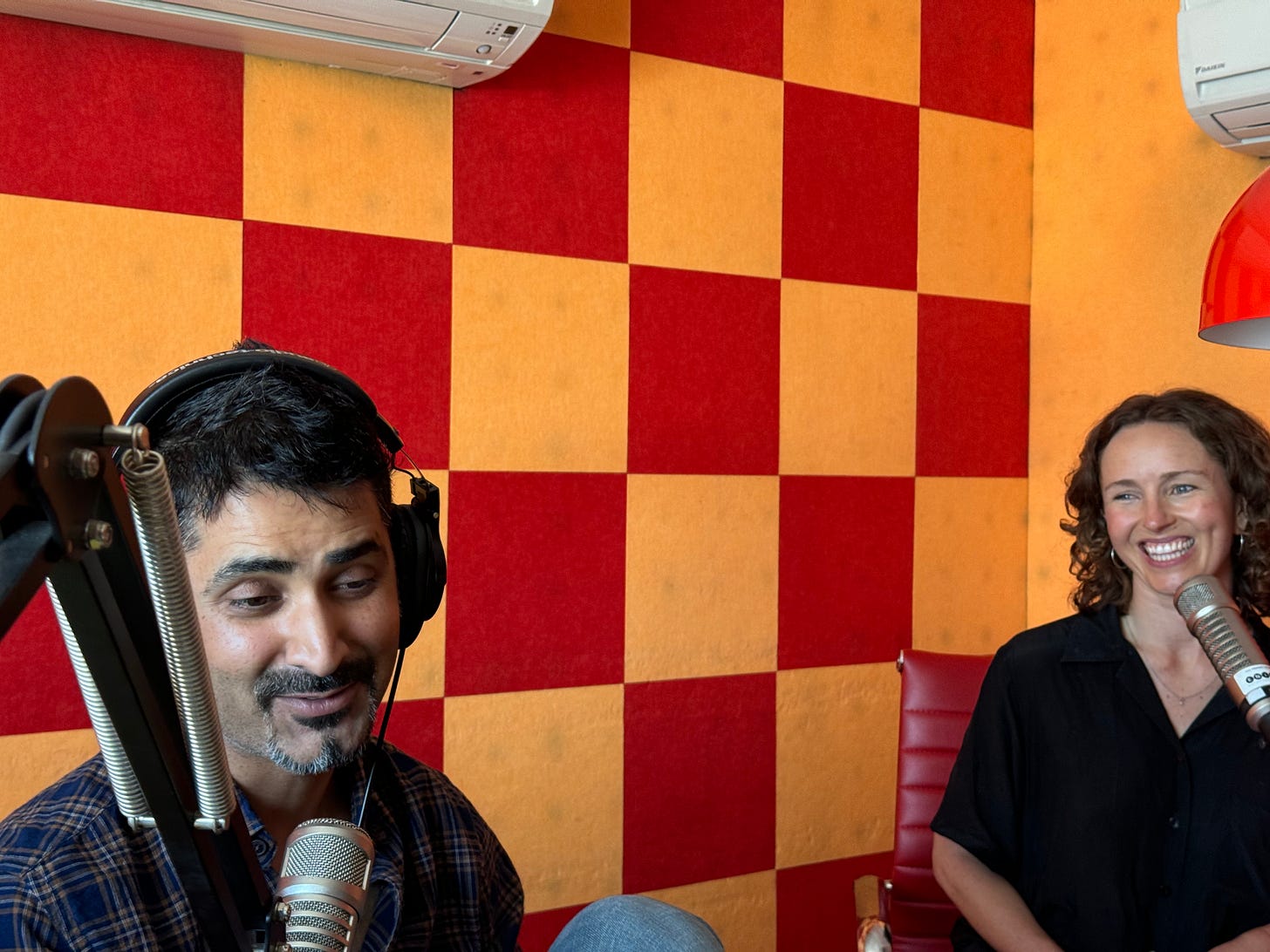
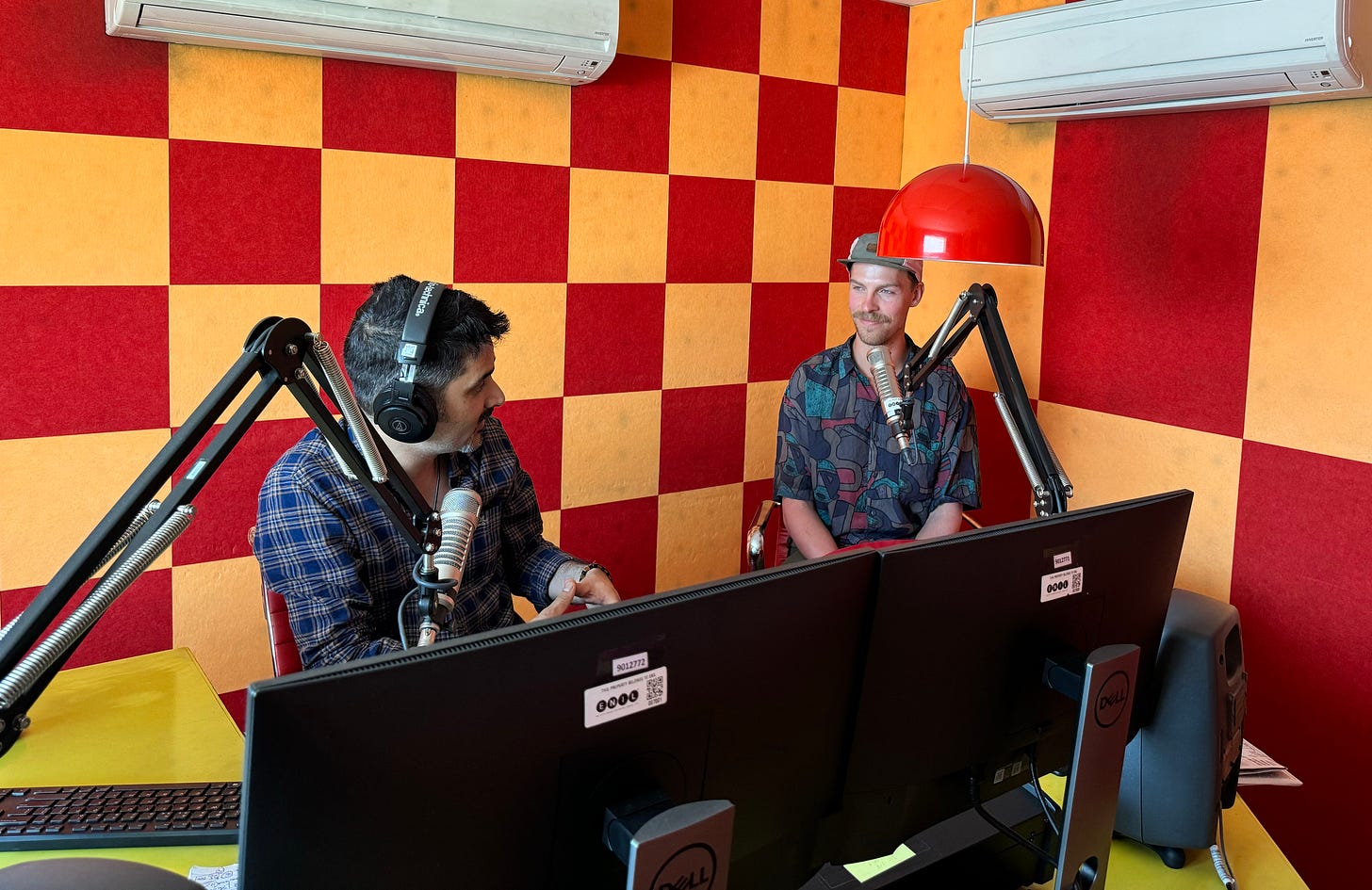


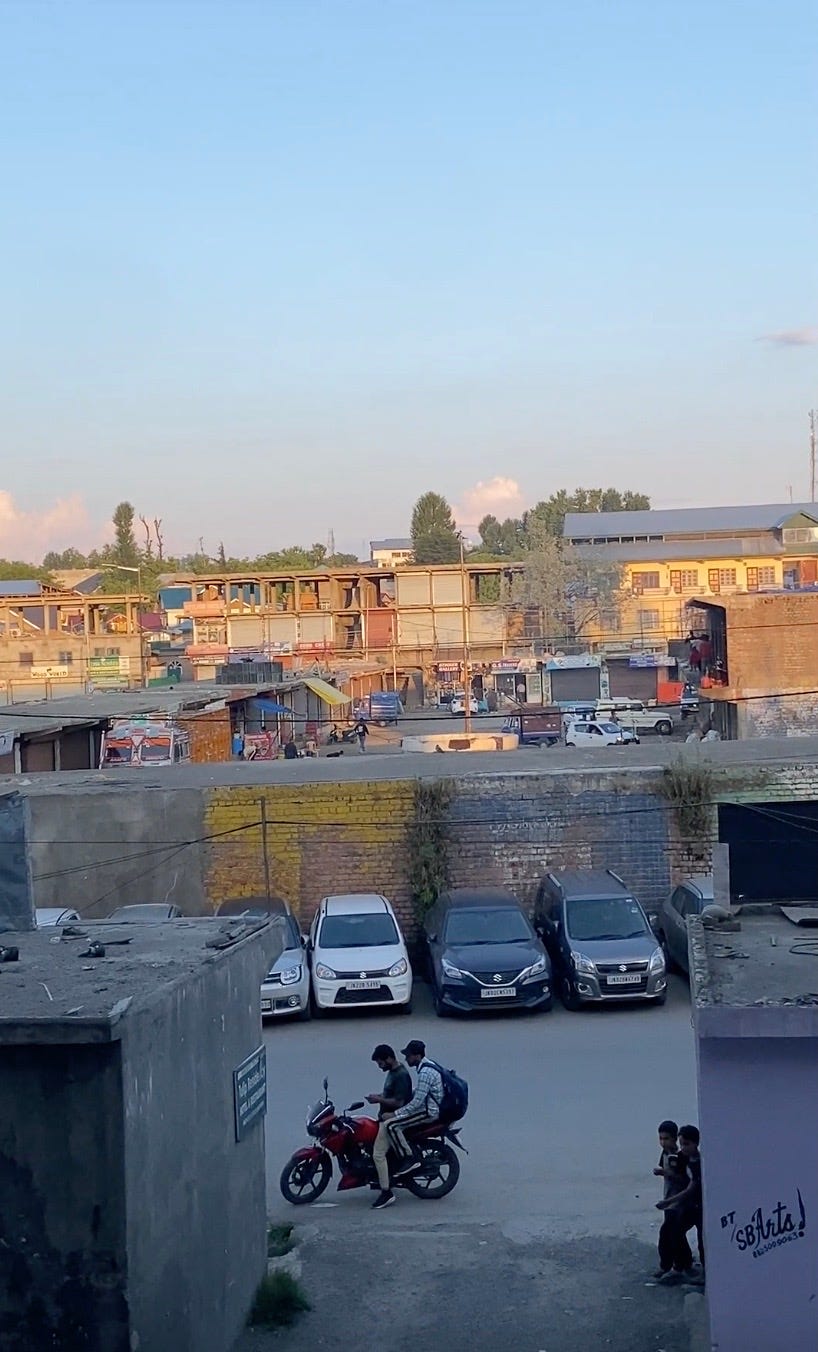
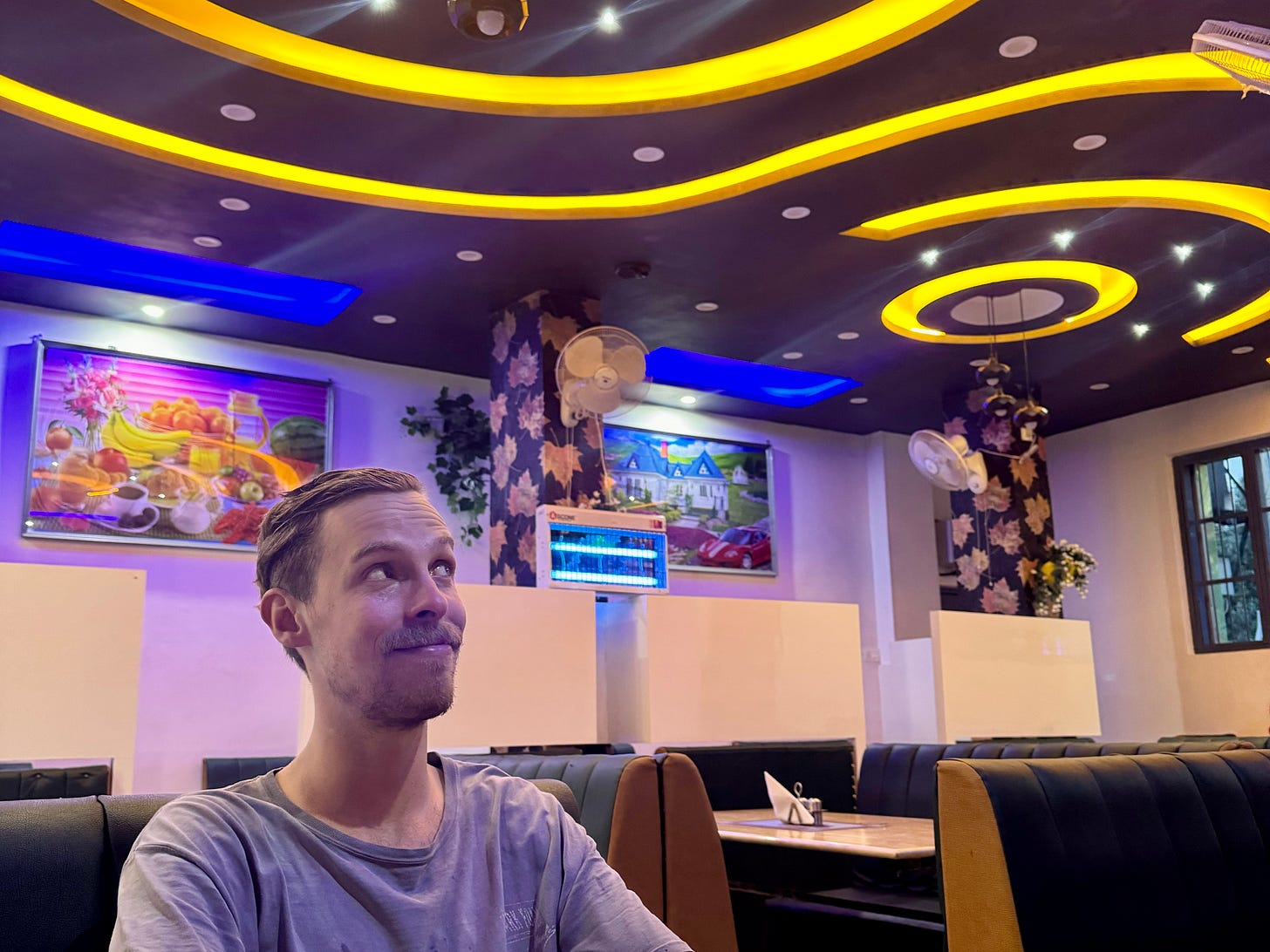
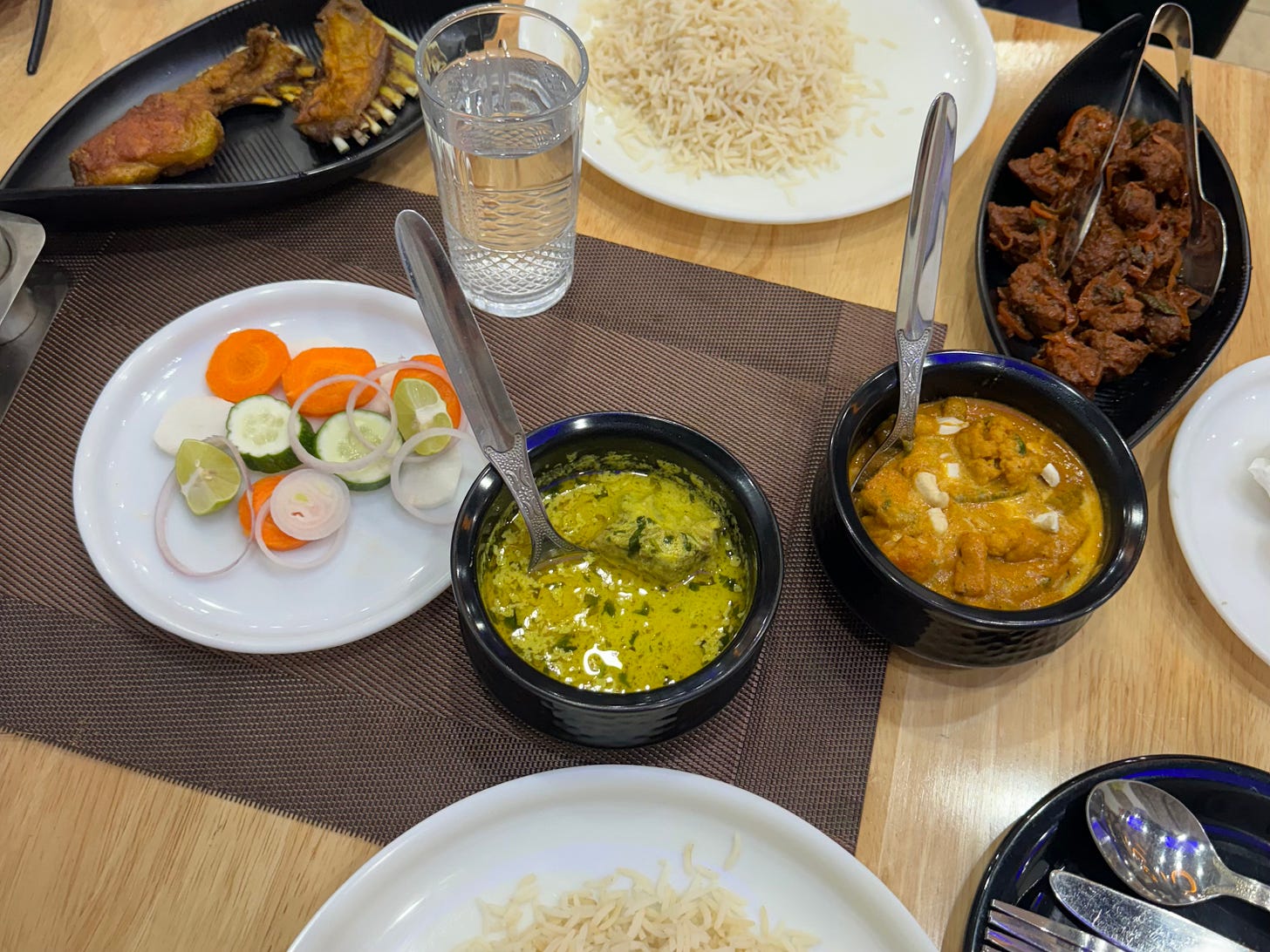
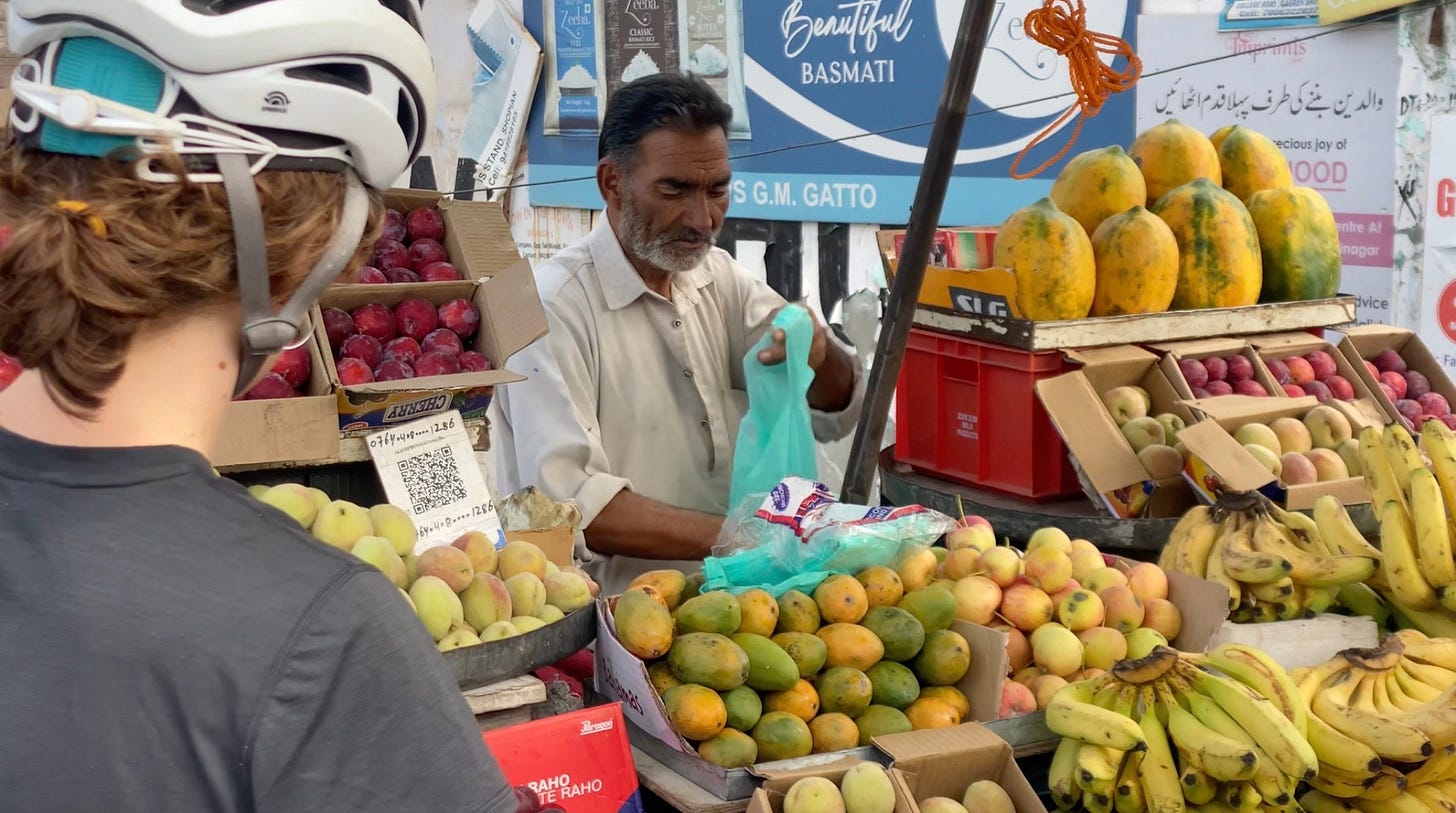

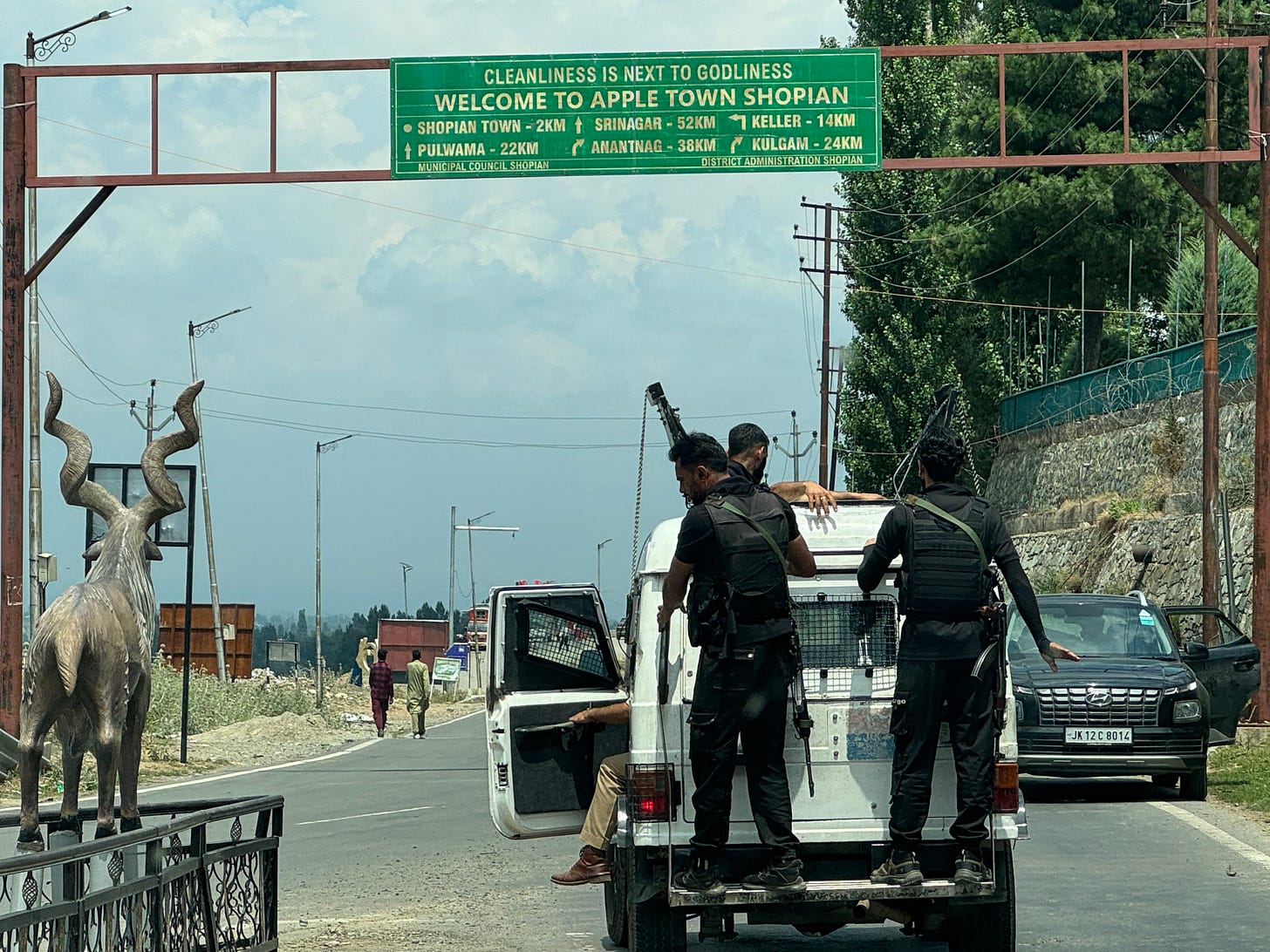
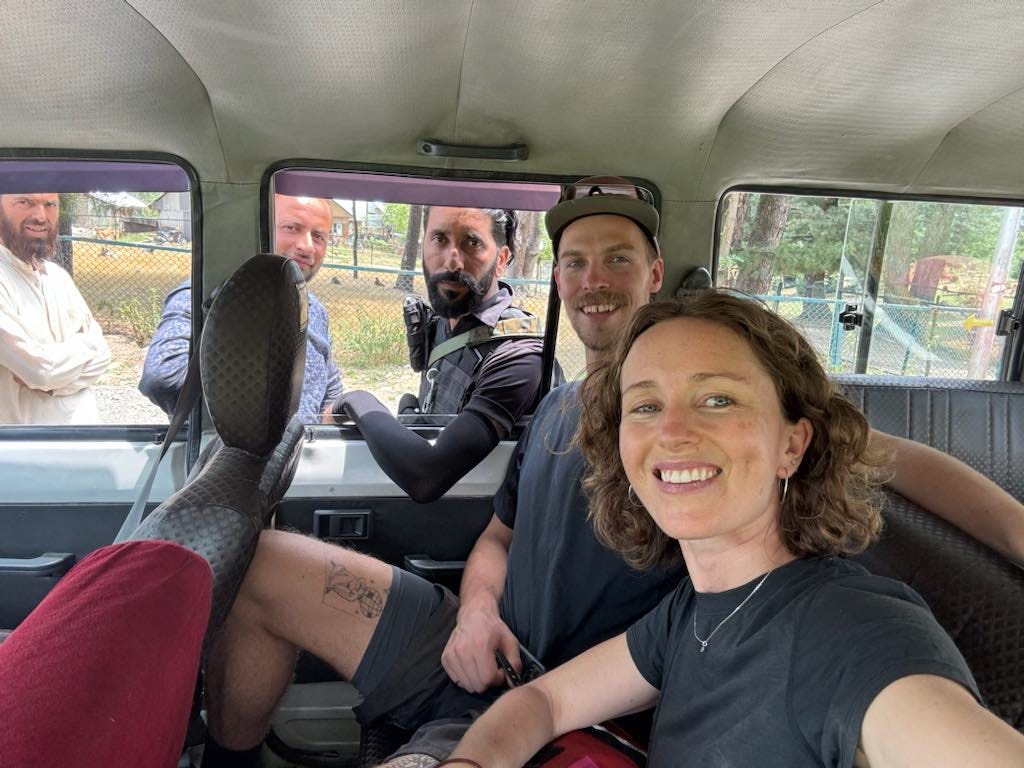
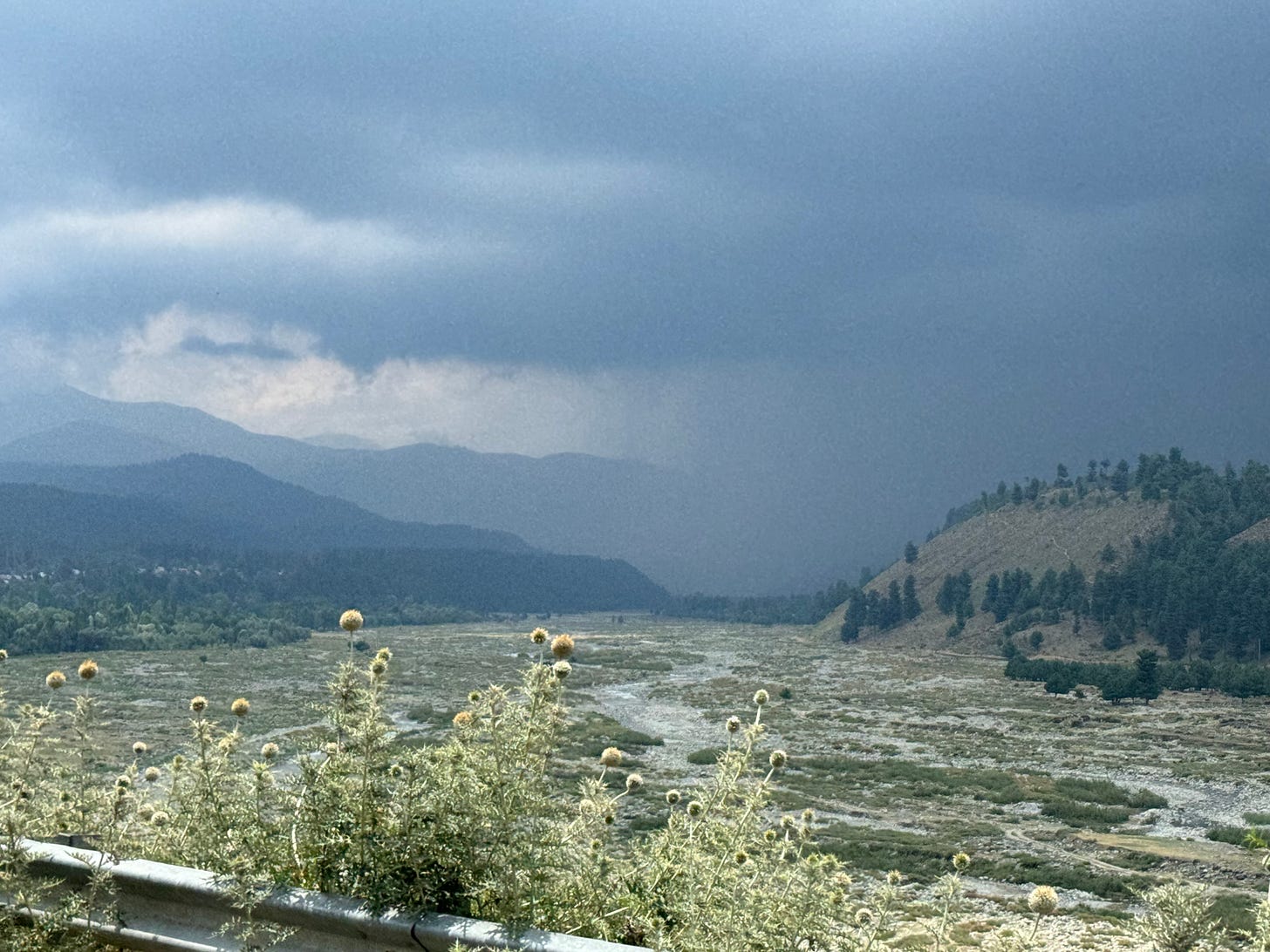
Maybe if we bring the whole geier family we would be a big enough group to get into the mountains safely 😀
Hope you both are safe and sound